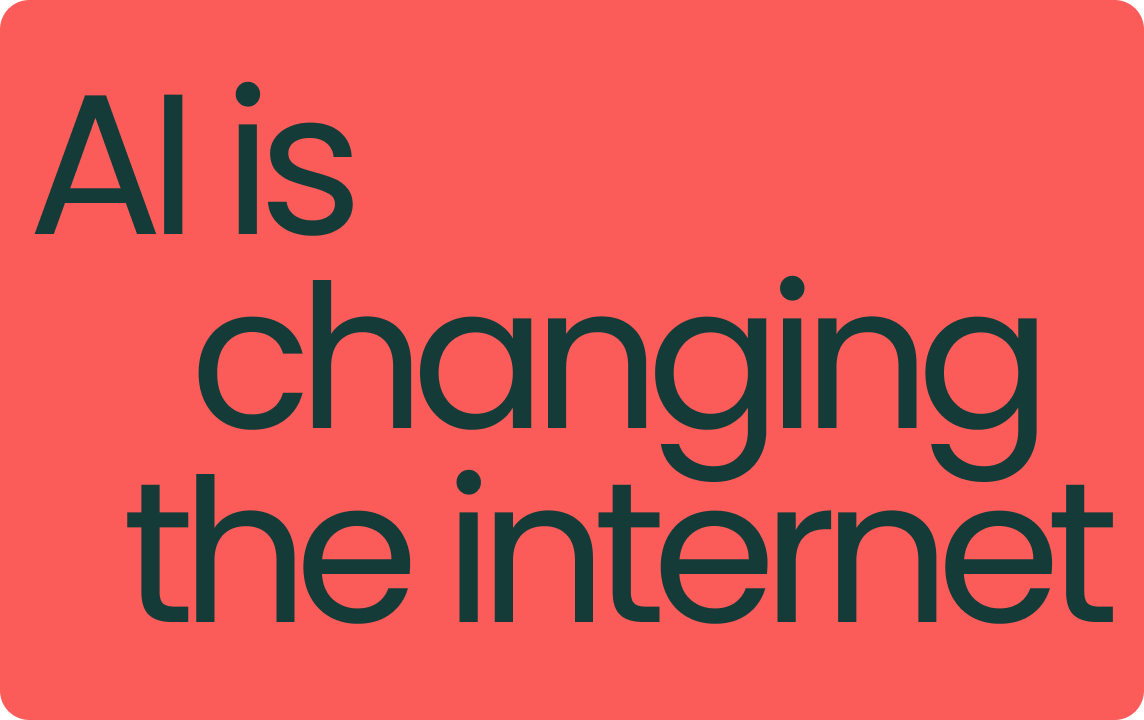
There are numerous aspects of Monday’s journey we could share—founder-led execution, navigating a crowded market, highly effective performance marketing, the AI opportunity, or its go-to-market (GTM) and product evolution towards enterprise—but here we will focus on what we believe to be a critical and often under-appreciated advantage: Monday’s platform dynamics and how they drive efficient growth in one of the largest opportunities in software.
We recently joined the Business Breakdowns podcast to chat with Matthew Reustle, about why we believe it is still very early days in the journey of this incredible company. Listen to the episode below.
What is Monday.com?
Monday.com was founded in 2012 by Roy Mann and Eran Zinman, who set out to build a work management platform that prioritised flexibility, collaboration, and ease of use. Roy and Eran lead the business today as co-CEOs. Their vision was to create software that empowered teams to work their way without the rigid structures of most software tools. This has led to the powerful and adaptable platform we see today serving 245,000 customers from small teams and SMBs through to the largest enterprise customers globally. While many know the company for simple task management, its customer base has taken it well beyond that into core business workflows.
At its core, Monday is a work management platform that helps teams and organisations of all sizes plan, track, and run workflows. Monday has now expanded into functional verticals like CRM, service management and software development tools. Customers are able to easily tailor workflows to the way they work within these products and between teams, maximising efficiency.
To bring this to life, consider the Canva marketing operations team, which went from a largely manual process for creative requests across multiple teams and tools, to a largely automated, multi-stage creative marketing process. Canva was able to improve marketing production time by 40%, increase creative output by 3x and more effectively manage concurrent projects as they rapidly scale into new markets around the world.
Monday’s underlying architecture creates differentiation
The work management space is competitive, but Monday’s underlying architecture has helped it differentiate and scale into a $15b company with over $1b in annual recurring revenue, growing at over 30% year-on-year.
The core advantage of Monday.com lies in its foundational platform technology, which is built on a proprietary schema-less database architecture called mondayDB. In practical terms, this means that users can instantly customise their workspaces—dragging, dropping, and adapting their workflows with automation at any scale in ways that alternatives with rigid structures simply can’t match. Rather than retrieving data from a database, Monday.com is a database!
More than a product: a highly scalable, open platform
Many software companies refer to themselves as platforms, but most are really just companies with multiple products.
What defines a platform is when a set of products becomes an ecosystem for others to build on top of and economically benefit from. We’ve seen extraordinary examples in cloud software in the last two decades - companies like Microsoft, ServiceNow, Shopify and Atlassian. We think Monday.com is on the right trajectory to join this group of generational and important companies.
Monday’s product flexibility and differentiated architecture have been critical to not only solving multiple problems for customers atop a single core, but it has also unlocked the ability for service partners and developers to build and extend Monday’s reach while growing their own revenue streams.
With this underlying architecture, Monday gets better as it gets bigger, and the platform advantages create a reinforcing growth advantage that builds defensibility over time. The exhibit below summarises the platform flywheel advantage, which the remainder of the article will expand on.

Monday’s emergence as an open platform delivers multiple advantages, all of which drive impressive financial metrics and value creation:
- Efficient customer expansion
- Efficient product development
- Efficient GTM via a rapidly growing ecosystem.
Platform advantage #1: Efficient Customer Expansion
A significant part of Monday’s growth story is expansion within existing customers. The best financial measure of this is Net Dollar Retention (NDR), which Monday has kept at approximately 115% or above over the past two years and we believe can be maintained over time. At 115%, the average existing customer who has already been using Monday for a year further doubles their spend roughly every five years.
Monday’s expansion is efficient and durable as the product deeply embeds into processes and team workflows. Monday, ServiceNow, and Atlassian’s Jira all demonstrate that when a team’s processes are centred around a product, it’s incredibly hard to replace.
Monday has an additional advantage: expansion is often self-serve, supported by the underlying platform capabilities. Our conversations with numerous globally recognised brands that use Monday showcase a typical customer expansion journey:

What starts as a 10-seat self-serve customer for a single project deployment can organically grow into hundreds or thousands of seats that define daily tasks — all with minimal friction — as outlined in the exhibit below. This low friction adoption is going to be critical in the years ahead, as Monday seamlessly integrates AI capabilities to maximise adoption and automation potential within current and new customer use cases.
There are many examples of this, including Nissan North America, which uses Monday boards and automated forms to manage daily ‘core’ tasks, planning and resource assignment across numerous teams. Bunnings Warehouse is another example, which initially deployed Monday for marketing operations, and expanded to product “range review”. This Bunnings team then used Monday as a common tool with external suppliers, naturally expanding the product not just internally, but to entirely new customers.

Platform advantage #2: Efficient product development
Monday's new products—CRM, Service, and Dev—underscore the product development efficiency of the platform. Not only does the flexible architecture simplify development, but also it optimises resource allocation by allowing Monday to observe how customers and partners naturally adapt the platform to their needs.
For example, in the case of CRM:
- Monday identified demand through its internal 'BigBrain' analytics engine, which tracked how customers were already configuring workflows similar to a CRM system.
- The company assigned just 4 engineers to develop the initial CRM product, leveraging 80% of the existing platform from its core work management tools.
- Rollout so far has been successful and as of December 2024, CRM now has ~28,000 customers, up from 17,000 just 12 months prior.

The same efficiency holds for the Service and Dev products. The first version of Dev was built by just 3 engineers and now boasts over 3,400 customers. For the most recently launched Service product, Monday observed that 20% of customers had already created their own ticketing workflows on the no-code platform, demonstrating strong demand pull before building the Service product.
This approach allows Monday to test and iterate on new products at a fraction of the cost of others before committing larger investments, keeping R&D capital-efficient while continually expanding the platform’s capabilities.
The platform approach also sets up Monday for success in embedding AI capabilities within existing products and building newer products like Service as proactive, AI-led products. Agentic AI solutions will have a deep context of user boards, automations, and project bottlenecks across global use of the Monday platform, democratising AI for non-technical teams and driving ROI. This creates a powerful opportunity for Monday’s AI tools to improve how customers work and progress its goal of becoming the common WorkOS for customers. It is early days, but customers have already performed over 10 million AI actions on the platform and that figure is growing exponentially each quarter.
Platform advantage #3: Efficient GTM via a rapidly growing ecosystem
Further amplifying this expansion, Monday has developed a thriving ecosystem of third-party builders, including solution partners, enterprise service providers, and marketplace developers, all of whom play a crucial role in accelerating growth.
- Service and technical partners help sell, onboard and implement Monday globally. They also customise Monday for industry-specific use cases (e.g., construction project management), unlocking new markets across geographies. These partners tailor Monday’s flexible platform to niche industries, making it easier for companies with specialised needs to adopt the platform. Monday currently has over 270 channel partners who work closely with the company and whose business models benefit materially from the low labour intensity of customising the platform.
- Marketplace developers build and monetise custom applications on top of Monday’s flexible architecture and APIs, extending its capabilities beyond native features. This not only enhances the platform’s functionality but also fosters a network effect where the ecosystem attracts more developers. Currently, over 90% of large accounts have third party apps installed on their Monday deployments.
- Enterprise service providers (e.g., KPMG and Accenture) are beginning to offer Monday as part of their digital transformation services, integrating it into broader enterprise software stacks. This signals growing enterprise momentum and increases Monday’s exposure to large-scale digital transformation projects.
By enabling external players to extend and distribute its platform, Monday unlocks new use cases, accelerates adoption in enterprise environments, and creates additional growth levers that compound over time.
Platform advantages drive financial strength
Monday’s platform enhances its growth drivers as outlined above:
- Customer expansion: The scalable and flexible platform enables frictionless expansion at high incremental margins.
- Product expansion: CRM, Service, Dev, and AI capabilities extend Monday’s total addressable market, each leveraging the existing platform.
- GTM and Partner ecosystem: Service and development partners unlock and expand industry-specific opportunities, and help Monday shift upmarket to higher contract values.
As we’ve also outlined, these growth drivers are highly efficient, delivering strong free cash flow growth. When combined, this creates best-in-class financial metrics. A common SaaS metric is ‘Rule of 40’, which is the sum of revenue growth and free cash flow margin. While the metric is arbitrary, it is helpful to compare trade-offs of growth and efficiency across companies.
The below exhibit shows that Monday is in fact a ‘Rule of 60’ company, and is indeed one of the best execution and growth stories in tech.

What's ahead for Monday.com: Continued growth, innovation and expansion
With these drivers in place, Monday is well-positioned to sustain efficient growth, reinvest in product innovation, and expand into new markets.
At Square Peg, we believe that Monday.com is one of the biggest opportunities in software, able to serve any business from the smallest to the very largest, while acting as an effective carrier for AI technologies with deep context of its existing customers. This is a significant part of our focus going forward and unlocks enormous potential in the customer base and across Monday’s ecosystem.
Want to learn more about Square Peg's Global Tech Fund or explore investing?
Read more about our strategy to back founder-led businesses in the public markets, as well as our investment philosophy. Click here to contact Square Peg Investor Relations.

.svg)


